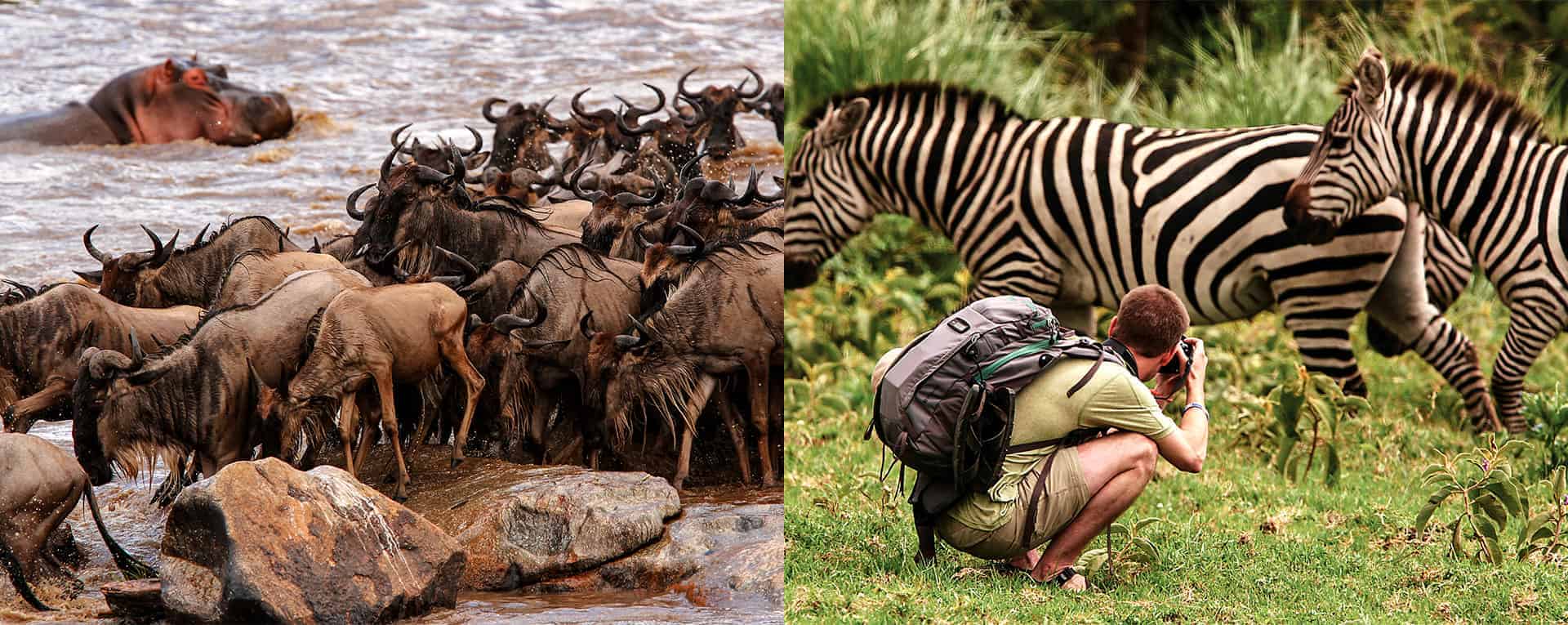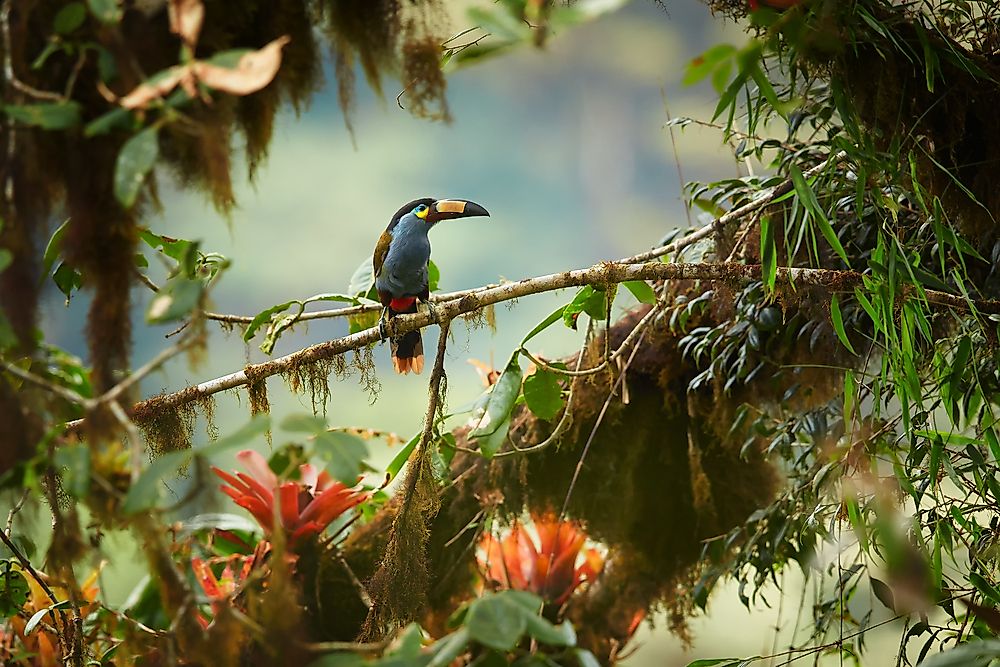Top Destinations for Wildlife Photography
Wildlife photography is an art that requires patience, skill, and a deep appreciation for nature. For those passionate about capturing the beauty and diversity of the animal kingdom, choosing the right destination is crucial.
The world is filled with breathtaking landscapes and ecosystems teeming with life, each offering unique opportunities for photographers.
This article explores some of the top destinations for wildlife photography, highlighting the rich biodiversity and unique experiences each location offers.
1. The Serengeti, Tanzania: The Great Migration
 The Serengeti National Park in Tanzania is synonymous with wildlife photography, renowned for its annual Great Migration. This natural spectacle, involving over two million wildebeests, zebras, and gazelles, is one of the most awe-inspiring events in the animal kingdom. Photographers flock to the Serengeti to capture images of these massive herds, along with the predators that follow them, including lions, cheetahs, and hyenas.
The Serengeti National Park in Tanzania is synonymous with wildlife photography, renowned for its annual Great Migration. This natural spectacle, involving over two million wildebeests, zebras, and gazelles, is one of the most awe-inspiring events in the animal kingdom. Photographers flock to the Serengeti to capture images of these massive herds, along with the predators that follow them, including lions, cheetahs, and hyenas.
The vast plains of the Serengeti provide a stunning backdrop, with endless horizons and dramatic skies that enhance the visual impact of photographs. The park's diverse habitats, ranging from grasslands to woodlands, support a wide variety of species, offering photographers a wealth of subjects beyond the migration itself. The Serengeti is also home to the Big Five—lion, leopard, elephant, buffalo, and rhinoceros—making it a top destination for those looking to capture iconic African wildlife.
Resources for Photographers:
2. The Galápagos Islands, Ecuador: Unique Biodiversity
The Galápagos Islands are a haven for wildlife photographers, offering a unique opportunity to capture species found nowhere else on Earth. The islands' isolation has resulted in the evolution of a distinct array of flora and fauna, making it a living laboratory of natural history. The Galápagos are famous for their giant tortoises, marine iguanas, and blue-footed boobies, among other species.:max_bytes(150000):strip_icc()/GettyImages-673723279-5c6d82f6c9e77c0001cda22e.jpg)
Photographers are drawn to the Galápagos not only for its unique wildlife but also for the close interactions they can have with animals. The lack of natural predators has made the wildlife here remarkably fearless, allowing for up-close and intimate shots.
The diverse landscapes, ranging from volcanic craters to lush highlands and pristine beaches, provide a varied backdrop for photography.
Resources for Photographers:
3. The Amazon Rainforest, South America: A Biodiversity Hotspot

The Amazon Rainforest, spanning across nine countries in South America, is one of the most biodiverse places on the planet. This vast and dense forest is home to an astonishing variety of species, many of which are still being discovered. Photographers visiting the Amazon can capture images of exotic birds, such as macaws and toucans, as well as jaguars, sloths, and an array of reptiles and insects.
The challenge of photographing in the Amazon lies in its dense vegetation and often challenging weather conditions, but the rewards are equally great. The rich colors and unique behaviors of the Amazonian wildlife offer endless opportunities for stunning photographs. Additionally, the region's rivers and wetlands provide a habitat for aquatic species like river dolphins and caimans, adding to the diversity of photographic subjects.
Resources for Photographers:
4. The Arctic and Antarctic: Polar Wildlife
For those seeking dramatic landscapes and unique wildlife, the polar regions offer unparalleled opportunities. The Arctic and Antarctic are home to some of the planet's most iconic species, adapted to extreme conditions.
In the Arctic, photographers can capture images of polar bears, Arctic foxes, and a variety of seabirds. The frozen landscapes, with their stark beauty, provide a compelling backdrop for wildlife photography.
In the Antarctic, the focus shifts to marine life, with opportunities to photograph penguins, seals, and whales. The Southern Ocean surrounding Antarctica is rich in krill, supporting a diverse ecosystem. The icebergs and glaciers of Antarctica create a surreal and otherworldly setting, making it a dream destination for photographers interested in capturing the beauty of Earth's polar regions.
Resources for Photographers:
5. The Pantanal, Brazil: Wetland Wonders
The Pantanal in Brazil is the world's largest tropical wetland and a lesser-known gem for wildlife photography. This vast, seasonally flooded region is home to a stunning variety of wildlife, including the elusive jaguar, which is one of the main attractions for photographers. The Pantanal also boasts an impressive diversity of bird species, with over 650 recorded, making it a paradise for bird photographers.
The wetland's open landscapes provide excellent visibility, allowing for easier tracking and photographing of animals. The Pantanal's rich ecosystem includes giant river otters, capybaras, and caimans, among other species. The interplay of water, light, and wildlife in this unique environment offers photographers the chance to capture dramatic and compelling images.
Resources for Photographers:
6. The Okavango Delta, Botswana: Water and Wildlife
The Okavango Delta in Botswana is a UNESCO World Heritage site and a unique destination for wildlife photography. This inland delta, created by seasonal flooding, supports a rich variety of wildlife, including large populations of elephants, lions, and hippos. The Okavango's waterways and islands provide a dynamic environment where photographers can capture stunning images of animals in their natural habitats.
One of the highlights of photographing in the Okavango Delta is the opportunity to take mokoro (dugout canoe) safaris, which allow for close encounters with wildlife from a unique perspective. The region's sunsets and sunrises, reflecting off the water, create magical lighting conditions for photography. The Okavango Delta's diverse ecosystems, from open floodplains to dense woodlands, offer a wide range of photographic opportunities.
Resources for Photographers:
7. The Canadian Rockies, Canada: Majestic Mountains and Wildlife
The Canadian Rockies, spanning the provinces of British Columbia and Alberta, are known for their stunning landscapes and diverse wildlife. Photographers visiting the Rockies can capture images of iconic North American species such as grizzly bears, elk, and mountain goats, set against the backdrop of towering peaks and pristine lakes.
The changing seasons in the Canadian Rockies offer unique photographic opportunities, from the vibrant colors of autumn foliage to the snow-covered landscapes of winter. The region's national parks, including Banff and Jasper, are well-protected and provide accessible locations for wildlife photography. The combination of majestic scenery and abundant wildlife makes the Canadian Rockies a must-visit destination for photographers.
8. The Great Barrier Reef, Australia: Underwater Wonders
The Great Barrier Reef, located off the coast of Queensland, Australia, is the world's largest coral reef system and a spectacular destination for underwater photography. The reef's vibrant marine life includes a diverse array of fish, coral, sharks, and rays, providing endless opportunities for capturing underwater scenes.
Photographers can explore the reef's shallow lagoons and deeper outer reefs, each offering different photographic subjects and challenges. The crystal-clear waters of the Great Barrier Reef, along with its abundant biodiversity, make it an ideal location for both macro and wide-angle photography.
The reef's colorful coral formations and diverse marine species create stunning visuals, making it a dream destination for underwater photographers.
Resources for Photographers:
Conclusion
The world is filled with incredible destinations for wildlife photography, each offering unique opportunities to capture the beauty and diversity of nature. From the vast plains of the Serengeti to the underwater wonders of the Great Barrier Reef, these locations provide a rich tapestry of ecosystems and species for photographers to explore. Whether you are a seasoned professional or an enthusiastic amateur, these top destinations offer unforgettable experiences and the chance to create stunning images that celebrate the natural world.
Sources
- Serengeti National Park Official Site
- Galápagos National Park Official Site
- Amazon Conservation
- Rainforest Alliance
- Antarctic Treaty System
- Arctic Council


















































